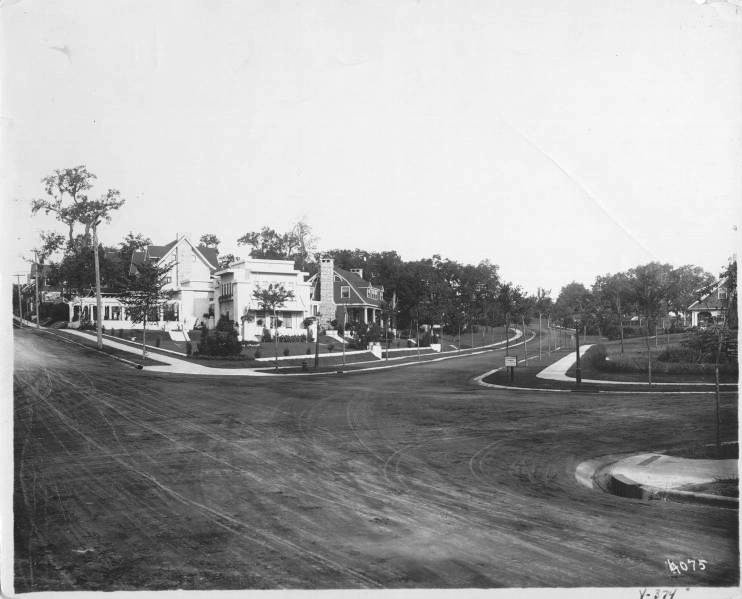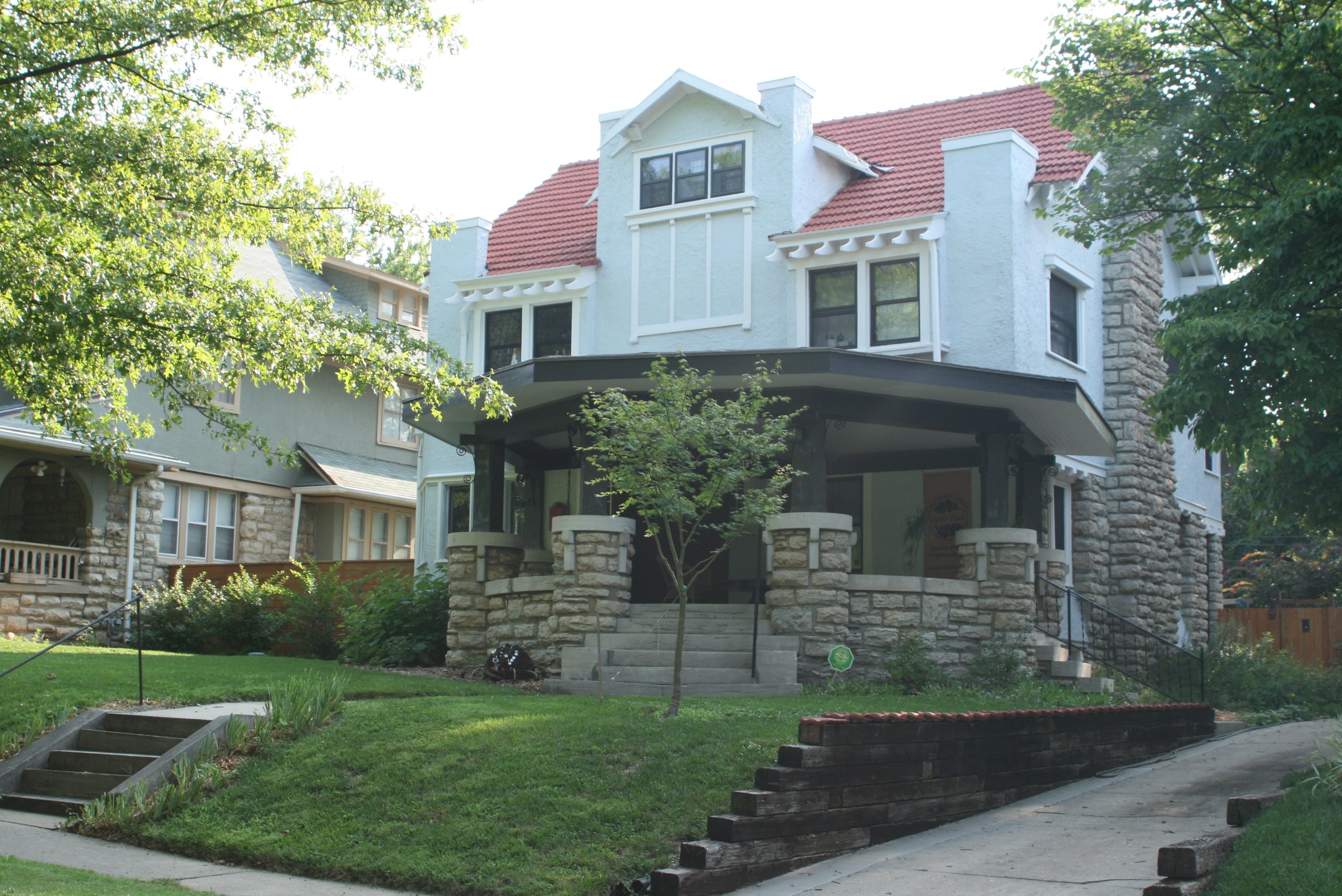
History of Squier Park
Lieut. James Jordan Squier, 1836-1900
Lieut. James Jordan Squier
James J. Squier was born in Pennsylvania in 1836. He managed a hardware store in Cambridge, Ohio with his father in 1856 before moving to Chicago where he began a highly successful career in cattle. In 1872 Squier moved to Kansas City to work as a cattle buyer for the Fowler packing house and eventually amassed a great fortune. Squier, along with several other wealthy Kansas Citians, founded Citizens' National Bank in 1882 and the Interstate National Bank in 1889, both primarily cattlemen's banks.
Squier took pride in the country estate he built shortly after purchasing land between 36th and 41st Streets, and between Troost and The Paseo, outfitting it with a suitable residence, formal landscaping, a fishpond, and a deer park. Still, Squier was aware that Kansas City was moving further South and East closer to his property. Seeing an opportunity, Squier began to divide his land into residential lots in the hopes of creating a new development - but by 1900 only a small number of lots had homes, mostly north of 37th Street.
Cora Squier Jones & Robert V. Jones
James J. Squier died in 1900, leaving his estate to his wife and only daughter, Cora Squier Jones - who was married to Robert V. Jones, a successful residential developer. Although most of the property had been subdivided 1887, the lots still stood empty. Inspired by the opportunity, Jones formed a real estate and mortgage company in 1908, the Manheim Realty & Investment Company. Through the company, Jones developed a new plan to subdivide the land between 37th Street and 39th Street.
Jones envisioned a cohesive neighborhood where each house had a unique design that stood at the center of a spacious lot. He worked with a variety of prominent Kansas City architects, builders, and homeowners to design high-style dwellings throughout the subdivision. Construction continued steadily throughout the 1910s and into the 1920s. Many of the Manheim Realty & Investment Company homes contained such luxuries for the time as hot water heat, sleeping porches, and multiple bathrooms.
Looking North and West at Manheim Rd & 39th St into Squier Park, including the iconic home designed in the style of famed Kansas City Architect Louis Curtiss.
By 1920, the neighborhood was filled with architect-designed homes and the curve of Manheim Road created a triangular lot landscaped as a park. Numerous prominent Kansas City architects designed homes in Squier Park, including Louis Curtiss, John McKecknie, Nelle E. Peters, Selby Kerfiss, and Smith, Rea & Lovitt. The wide variety of high-style designs in Squier Park illustrates the wealth of architectural styles popular in the early twentieth century and Jones' requirement that each house have a unique design.
In 1925, Robert and Cora Jones divorced, selling the remainder of the property, including Squier Manor. The new owner demolished the residence in preparation for developing the lot as "Squier Manor Community Center" which was to include apartment buildings, a row of businesses, a theater, and a hotel. This development never materialized and the block was subdivided in 1930 for residential development. In 1940, Bishop Lillis High School was constructed on the southeast quarter of the block.
Architecture & Design
Squier Park has a wide variety of building designs reflecting the prolonged development in the neighborhood as well as the evolution of popular architectural styles popular during this period. The neighborhood developed in waves, from the 1880s on the north side of the neighborhood, to 1915 on the south side.
The most common architectural styles represented in Squier Park are the Prairie School and Craftsman, with numerous examples of the Kansas City Shirtwaist variant. There are also examples of Folk Victorian dwellings as well as historical revival styles, including Colonial Revival, Classical Revival, and Tudor Revival. Other unique dwellings exhibit the Shingle and International Styles.
The original owners of Squier Park homes were upper-middle class attorneys, entrepreneurs, and executives of some of Kansas City’s most well known companies. Two notable residents of the neighborhood were Michael Katz, co-owner of Katz Drug Store, and former baseball player Johnny Kling.
Many early neighborhood residents were also members of the Beth Shalom Synagogue, located at 34th and Troost.
Decline & Redevelopment
The Great Depression began a period of decline for Squier Park. Many of the large houses in the neighborhood were converted into rooming houses or were simply left vacant. After World War II, flight to the suburbs sent Kansas City's population into a steep decline. The population center of the city moved south and east, away from Squier Park, and Troost Avenue became a dividing line in the city.
Around the same time, several Catholic groups, including the Benadictine Sisters of Mt. St. Scholastica and the Society of Our Lady of the Most Holy Trinity purchased property in Squier Park. The presence of these organizations helped solidify the neighborhood during a time of local urban disinvestment, and continue to be active members of the Squier Park community.
The late 1990s and early 2000s saw a revival of many of Kansas City's midtown neighborhoods, including Squier Park.
Now Alive & Thriving
Today, Squier Park has matured into a vibrant and active neighborhood. Its motto is "Pride, Preservation, Participation."
Led by the Squier Park Neighborhood Association, the neighborhood hosts a number of events each year. In addition, the Association funds improvement projects in the neighborhood, including planting and landscaping, and monthly clean-up days. Their neighborhood meetings are open to all residents.
On April 24, 2012, the Squier Park neighborhood was placed on the National Register of Historic Places, it is only the second residential district east of Troost Avenue to receive the designation.





